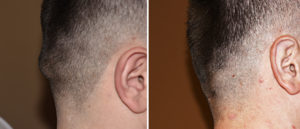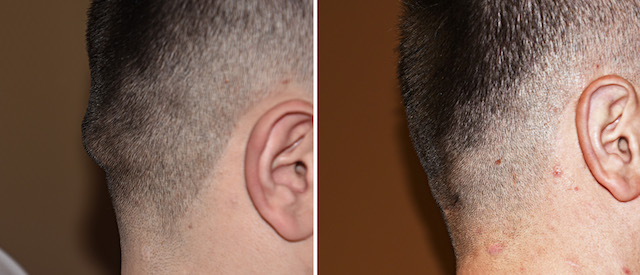The occipital knob, sometimes called occipital bun, is a protrusion of bone on the back of the head at the bottom of the occipital bone. It is actually a normal bony protrusion, known as the inion, but in some men becomes excessively large. Rather than staying hidden under the nuchal ridges its enlargement appears as a central bulge at the bottom of the hairline. Because men today often wear short hair or shave their heads, an occipital knob prominence becomes an aesthetic distraction.
The occipital knob is reduced through a small incision placed directly over it. The bone is extremely thick and is pure cortical bone. As a result a complete reduction of the bony knob is always possible. In most cases the overlying scalp shrinks down over it and leaves no soft tissue excess. In rare cases an excessive scalp roll is present over it and it can also be concurrently reduced.

Occipital knob reduction is one of the simpler skull reshaping surgeries from a patient’s perspective. There is minimal swelling and discomfort and recovery to all normal activities occurs within a few days. The neck may be a little sore but not functionally restrictive. Results are uniformly successful and no revisions of the bone reduction or scalp scar have been requested by those treated.
Dr. Barry Eppley
Indianapolis, Indiana



